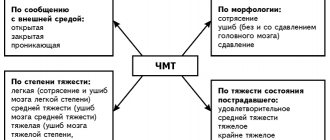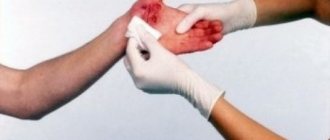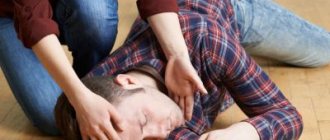What is the provoking factor?
The main reason for the occurrence of epileptic seizures is the withdrawal of medications taken, the action of which is aimed at suppressing epileptic seizures.
However, status epilepticus can occur not only against the background of epilepsy, but also due to brain lesions, including:
- head injury;
- intoxication;
- intracranial malignant tumor;
- circulatory disorders in the brain;
- infection;
- dropsy of the brain (encephalopathy);
- withdrawal syndrome;
- complications of diabetes;
- hematoma.
The incidence of epistatus without a predisposing factor - epilepsy is approximately 50%.
Epilepsy, unspecified - example of writing a call card
The call card for epilepsy indicates the patient's complaints at the time of examination.
The documentation reflects the following points:
- the nature of the convulsions (if they are conscious);
- the patient’s feelings before the attack;
- the presence of a bite injury on the tongue;
- presence of involuntary urination;
- presence of headache;
- the presence of dyspeptic symptoms (nausea, vomiting);
- the presence of sensitivity disorders and paresis;
- the presence of general weakness;
- presence of speech, vision, and cognitive impairments.
Anamnesis
The medical history in the emergency call card for epilepsy includes items such as:
Time of seizure onset (how many hours/minutes ago).- Nature of seizures (partial, generalized).
- The sequence of appearance and dynamics of symptoms or complaints that became the reason for calling the emergency medical team or identified during a medical examination.
- Did the patient fall during the attack? If you fell, did you hit your head?
- Events that triggered the seizure.
- Frequency of seizures.
- Anticonvulsant medications taken by the patient.
- Concomitant pathologies (if any).
Also, the call card for epistatus indicates the source of the information received - from the words of the patient, eyewitnesses, from the outpatient card, discharge summary from the hospital. If the source of information cannot be established, it is necessary to indicate that a reliable history is unknown.
Additionally, the call card for convulsive syndrome indicates whether the allergy history is aggravated, and in women - if there is additional information regarding the gynecological history (diseases, surgical interventions, etc.). If the patient has an elevated body temperature, his epidemiological history should be clarified.
Male, 36 years old. The reason for the call is that he is unconscious on the street, the reason has not been established (passers-by call).
At the time of inspection, he makes no complaints about what happened and doesn’t remember. He is located on the street near the store, sitting on the porch.
According to others, about 10-15 minutes ago there was an attack of tonic-clonic seizures with loss of consciousness and foam at the mouth. No treatment was undertaken. This is not the first time this has happened; I previously went to the emergency room for epileptic seizures.
Anamnesis of life
Epilepsy, the patient is registered as an outpatient with a neurologist. Regularly takes anticonvulsant medications. Comfortable blood pressure cannot be explained.
- moderate condition;
- level of consciousness - stunned (13 according to Glasgow school), behavior is inhibited;
- pupils are normal, D=S, reaction to light is lively, gaze paresis is absent, horizontal nystagmus;
- the skin is dry, clean, physiologically colored, the mucous membranes are not inflamed;
- heart sounds are clear, rhythmic, there are no noises, the pulse in the peripheral arteries is rhythmic, of satisfactory quality;
- from the central nervous system – there are no meningeal symptoms, muscle tone is increased, there are no focal symptoms;
- the pharynx is calm, the tonsils are of normal size;
- chest excursion is normal, breathing is normal, percussion – pulmonary sound, auscultation – vesicular breathing, no wheezing;
- no peripheral edema;
- the tongue is moist, clean;
- the abdomen is soft, painless, regular in shape, takes part in the act of breathing, there are no symptoms of peritoneal irritation;
- the liver does not extend beyond the edge of the costal arch;
- chair – 1 time per day, decorated;
- diuresis is normal, SSPO is negative.
Main pathology
The patient is stunned, inhibited, inadequate, lost orientation in time and space. There are marks of teeth on the tongue, and there are also signs of involuntary urination. Consciousness gradually recovered during the examination. No signs of head injuries were found.
| time | 17-30 | 17-50 | 18-10 | Etc. peace |
| NPV | 16 | 16 | 16 | 16 |
| Pulse | 86 | 84 | 76 | 72 |
| Heart rate | 86 | 84 | 76 | 72 |
| HELL | 150/90 | 130/80 | 130/80 | 130/80 |
| Pace. ºС | 36,6 | |||
| SpO2 | 97 | 97 | 97 | 97 |
Blood glucose – 6.9 mmol/l;
ECG data: sinus rhythm, 83 beats/min, no signs of acute pathology of the heart and blood vessels. There is no ECG archive.
Diagnosis by the EMS team
Epilepsy of unknown origin, condition after an attack.
Therapeutic measures
17-39 – Sol. MgSO4 25% – 10 ml i.v.
The patient was hospitalized in the neurological department of the city hospital.
Treatment result
As a result of the treatment measures taken, the patient's condition improved and consciousness was fully restored. During transportation to a medical facility, epileptic seizures did not recur.
Material tested by Aktion Medicine experts
First aid for seizures and epilepsy attacks
Convulsive seizures are attacks in which simultaneous spasms of muscles throughout the body occur.
The cause of seizures is some kind of disruption in the functioning of the brain. Which? Doesn't matter. At the stage of providing assistance, it makes no difference to us.
All seizures are often called "epileptic seizures" after the disease epilepsy, which is characterized by such seizures. But, in fact, seizures can occur with a host of other conditions/diseases.
Whatever the cause of the seizure, outwardly everything looks the same and the same help is required.
Main features:
- The whole body is tense , the limbs and head are either in an almost motionless state or making chaotic uncontrolled movements.
- There is no consciousness , although the eyes may be open and the person appears as if he is looking at others.
- The mouth may produce foam (thick saliva), sometimes tinged pink with a small amount of blood. Blood may appear if the victim bites his tongue or cheek.
ATTENTION!
A seizure in itself does not cause death. No matter how scary the victim looks, no matter how much foam comes out of his mouth, no matter how terrible grimaces appear on his face and no matter how terrible wheezing he makes, nothing threatens the life of the victim.
The main threat to the life and health of the victim is injuries received from a fall and uncontrolled movement.
Your actions:
- Do everything necessary to ensure that the person does not get injured! Move sharp hard objects away from the victim or move the victim away from them. If this is not possible, place something soft between the victim and the traumatic object.
- Wait until the cramps end. Cramps most often last between 15-30 seconds , although it may feel like many minutes have passed. In rare cases, seizures can last up to several minutes. Convulsive seizures can also be repeated several times in a row with intervals of rest between them.
- Call an ambulance - 103 or 112 from any phone - and clearly, in simple language, describe all the manifestations. For example: a young man, about 30 years old, has lost consciousness and is shaking in a convulsive fit.
You don't need to do anything else.
If the victim regains consciousness , monitor his condition, support him morally, wait for an ambulance. Usually the victim has absolutely no memory of the seizure episode.
If there is no consciousness , check for breathing. If there is breathing , turn the person on his side to avoid tongue retraction and respiratory arrest and continue to wait for the ambulance.
Harmful myths:
Myth #1 During a seizure, you need to insert a spoon into the victim’s mouth to:
- the tongue did not sink and did not block breathing (hold the tongue with a spoon)
- he didn't bite his tongue (insert it between his teeth)
Why should this NOT be done?
- The forcible insertion of hard objects into the mouth results in broken teeth, torn lips, the “rescue instrument” getting into the respiratory tract, etc.
- The tongue is not always bitten during convulsions. But even if this happened, it is not fatal. forcibly inserted spoon will cause more destruction in the oral cavity.
- The tongue does not sink during cramps and does not interfere with breathing! This is a scientific fact!!! Therefore, there is no need to go into your mouth after it.
Myth #2 During convulsions, you need to firmly fix the victim’s head and limbs
Why should this NOT be done?
- Fixation of the body does not affect the duration of the seizure. The cramps will end when they end.
- Forcibly holding the body is traumatic. Such “help” ends in sprained ligaments and dislocated joints. Allow the cramps to end spontaneously.
Any knowledge is useless if it does not lead to effective actions.
And here's what you need to do right now so that knowledge does not remain just knowledge:
- Tell everyone in your family what you learn about the seizure. Just tell it in your own words. Firstly, by passing on information to others, you yourself will remember it better. Secondly, you create a safe environment around yourself that can help you if you suddenly become the victim, God forbid.
- If you have children, make sure they know how to call 911. They may be the only ones near the victim, and his timely call for an ambulance will determine his salvation.
Be prepared and may you never need it!
Author: Artyom Kharchikov
PS Was the material useful to you? Like, leave a review 
It is very important for us to know your opinion about our work!
Types and stages of epistatus
The variability of the types of epileptic seizures determines the formation of various clinical forms of epileptic seizures. They are divided into two main groups - convulsive and non-convulsive seizures.
According to the classification, the following types of status epilepticus are distinguished:
- Generalized SE - characterized by widespread tonic-clonic convulsions with an unconscious state.
- Not completely generalized ES - characterized by atypical muscle spasms with complete loss of consciousness. Tonic status is most common among children with Lennox-Gastaut syndrome. Can be observed at different ages. Clonic status is observed with epilepsy in infants, as well as with convulsions with high fever in young children. Myoclonic status is characterized by constant or episodic muscle twitching.
- The status of focal paroxysms proceeds according to the type of Jacksonian epilepsy with muscle contraction of a certain localization, for example, only the muscles of the face, one limb or half of the body. In this case, loss of consciousness may not occur.
- Absence or non-convulsive status is accompanied by a complete loss of consciousness without muscle contractions. Such attacks are characterized by the mildest course, however, due to the absence of seizures, diagnosis can be difficult.
- Partial status is characterized by unconscious and automatic actions with complete or incomplete loss of consciousness.
The stages of development of epistatus are also distinguished:
- pre-status - lasts 1-10 minutes;
- initial - lasts from 10 minutes to half an hour;
- expanded - lasts from half an hour to an hour;
- refractory - lasts more than an hour.
What does it look like in real life
Symptoms of status epilepticus are determined by severe disorders in consciousness, respiratory system and hemodynamics, which are caused by a previous attack; the number of seizures during epileptic status can range from 3 to 20 per hour.
Consciousness by the time of the next attack does not clear up and the person is in a state of stupor, numbness or coma.
With prolonged ES, the comatose state worsens, becomes deeper, convulsions take on a tonic form, an increase in blood pressure is replaced by a sharp decrease, and increased reflexion is replaced by a lack of reactions. Hemodynamic and respiratory disorders become more pronounced.
The convulsions may disappear, and then the stage of epileptic prostration begins, which is characterized by external changes:
- pupil size changes;
- the gaze becomes unconscious;
- mouth slightly open.
It is very dangerous! In this condition, death can occur.
Epistatus necessarily lasts more than half an hour. This condition should be differentiated from episodic attacks, during the intervals between which there is a complete or almost complete clearing of consciousness, as well as a partial restoration of the patient’s physiological state.
The course of convulsive SE can be divided into two phases. At the first stage, compensatory changes occur to maintain blood circulation and the metabolic process.
This condition is characterized by:
- tachycardia;
- high blood pressure;
- vomit;
- involuntary urination;
- involuntary defecation.
The second phase occurs after half an hour or an hour and is characterized by a breakdown of compensatory changes. In this state, the following processes occur:
- lowering blood pressure;
- arrhythmia;
- respiratory dysfunction;
- thrombosis of the pulmonary artery and its branches;
- acute renal and liver failure.
Non-convulsive epistatus is characterized by various disorders of consciousness:
- feeling of detachment;
- immobilization.
In the case of ES of complex partial seizures, the following is observed:
- behavioral deviations;
- confusion;
- symptoms of psychosis.
Cheat sheet when applying for a calling card for a patient with epilepsy
The call card for epilepsy indicates the patient's complaints at the time of examination.
The documentation reflects the following points:
- the nature of the convulsions (if they are conscious);
- the patient’s feelings before the attack;
- the presence of a bite injury on the tongue;
- presence of involuntary urination;
- presence of headache;
- the presence of dyspeptic symptoms (nausea, vomiting);
- the presence of sensitivity disorders and paresis;
- the presence of general weakness;
- presence of speech, vision, and cognitive impairments.
Clinical recommendations can be deployed in the Consilium System: available for doctors only!
Anamnesis
The medical history in the emergency call card for epilepsy includes items such as:
- Time of seizure onset (how many hours/minutes ago).
- Nature of seizures (partial, generalized).
- The sequence of appearance and dynamics of symptoms or complaints that became the reason for calling the emergency medical team or identified during a medical examination.
- Did the patient fall during the attack? If you fell, did you hit your head?
- Events that triggered the seizure.
- Frequency of seizures.
- Anticonvulsant medications taken by the patient.
- Concomitant pathologies (if any).
Also, the call card for epistatus indicates the source of the information received - from the words of the patient, eyewitnesses, from the outpatient card, discharge summary from the hospital. If the source of information cannot be established, it is necessary to indicate that a reliable history is unknown.
Additionally, the call card for convulsive syndrome indicates whether the allergy history is aggravated, and in women - if there is additional information regarding the gynecological history (diseases, surgical interventions, etc.). If the patient has an elevated body temperature, his epidemiological history should be clarified.
Objectively
The emergency physician should pay special attention to such indicators as:
- severity of condition;
- level of consciousness (according to the Glasgow school);
- position;
- condition of the skin and mucous membranes;
- Body temperature;
- condition of the tongue - localization, whether there is a bite;
- characteristics of behavior, psycho-emotional state;
- contact: describe whether the patient is oriented in time and space, whether he remembers who he is, whether he follows the instructions of the emergency doctor;
- impairment of cognitive functions (memory, attention, perception);
- features of sensitivity (it is necessary to indicate the type of sensitivity being tested (temperature, tactile, pain, etc.), as well as the identified disorders and their localization;
- speech features (normal, aphasia, dysarthria, etc.);
- pupils (dilated, constricted, normal size);
- features of the pupillary reaction - friendly or not;
- presence or absence of nystagmus (if present, indicate its side and nature);
- the presence or absence of facial asymmetry (if present, indicate the side, central or peripheral paresis of the facial nerve);
- the presence or absence of meningeal symptoms (stiffness of the neck muscles, Brudzinski’s, Kernig’s symptoms, etc.);
- the presence or absence of focal symptoms (paresis, plegia, their severity and type);
- the presence or absence of pathological foot symptoms (Babinsky, etc.);
- tendon reflexes D=S;
- coordination tests - finger-nose, knee-heel, etc.;
- whether the patient controls urination and defecation.
If the patient is injured due to a fall, this should also be described in detail in the call card for an epileptic attack.
What information should be in the patient's outpatient medical record?
The worksheet provides information about what information needs to be recorded on the card, how to fill it out and when it needs to be entered.
The material is available in the Chief Physician Help System for subscribers and demo access clients. Download table
For reference: epistatus
Status epilepticus is a pathological condition in which epileptic seizures follow each other (they can last for half an hour or more), and in the intervals between attacks the patient does not regain consciousness. Epistatus can develop as a complication of epilepsy or become its manifest manifestation.
A repeated attack develops even before the impaired functions of the central nervous system, which resulted from the previous attack, have been restored.
Thus, violations from various systems and organs of the human body progressively accumulate.
If, in the intervals between attacks, the patient’s condition is relatively normalized, consciousness is restored and no progressive impairment of body functions is observed, then this condition is called serial epileptic seizures and is qualitatively different from status epilepticus.
The pathophysiology of all types of status epilepticus is the same - it differs only in the degree of involvement of the brain in the epileptic activity.
The basis of this condition is continuous (or intermittent, but repeating) paroxysmal collective electrical activity of brain neurons.
Then pathological excitation occurs in neural circles, which, in turn, leads to the maintenance of the status of epileptic seizures according to the principle of a vicious circle.
Depending on how strongly different parts of the brain are involved in this pathological activity, the nature of the epistatus also differs.
Unlike a single epileptic seizure, the body is not able to independently stop status epilepticus. In addition, with this condition it is not necessary to fall into a coma, and in some cases the patient may even retain formal consciousness.
- In this article you will find only a few ready-made samples and templates. There are more than 5000
of them in the Consilium System .
First aid - rules and tips
The main goal when providing first emergency care in case of epistatus before the arrival of doctors is to prevent damage and trauma to the patient.
What to do during an attack:
- lay the person on a comfortable surface to reduce the risk of injury;
- remove those items of clothing that may cause discomfort (for example, a tie, a belt), unbutton the collar;
- place rolled clothing under your head;
- carefully turn your head to the side so that the patient does not choke on his saliva;
- if your mouth is slightly open, you need to put a handkerchief or some kind of cloth between your teeth, but in no case a sharp object, so as not to break your teeth;
- remove all dangerous objects that are in the immediate vicinity to avoid injury;
- do not hold the person too tightly, otherwise there is a high risk of broken bones;
- do not open your teeth if they are clenched.
Causes of occurrence and development
There are no immediate causes that can cause an epileptic seizure, but there are a number of risk factors that, under certain circumstances, can trigger an epileptic seizure. Risk factors can be either congenital or acquired.
Hereditary predisposition involves the special functioning of neurons and their tendency to spontaneous excitation. This feature can be passed on from generation to generation, but does not always manifest itself. Epilepsy with a hereditary predisposition can develop in the case of acquired provoking factors, namely:
- with cerebral hemorrhage or other cerebrovascular accidents;
- after traumatic brain injury;
- as a result of prolonged alcoholism, use of narcotic and psychotropic drugs, severe stress;
- with meningitis, encephalitis;
- for birth injuries;
- with a brain abscess or stroke;
- in the presence of aneurysms, cysts or adhesions in the brain.
Factors influencing the occurrence of an epileptic seizure are:
- poor sleep patterns;
- drinking alcohol, caffeine, taking any amount of drugs, antidepressants not prescribed by a doctor;
- refusal to take medications or undergo therapy;
- smoking;
- stress;
- changes in hormonal levels due to certain diseases;
- menstruation in women.
It is very important to understand: if an attack has begun, in no case should you give the patient any medications, especially those that are not prescribed by the attending physician. In such a situation, the process has already started, and any pills can only do harm. An attack, if it lasts no more than three minutes, should simply be controlled and not try to bring the person to his senses. However, if the attack lasts longer, it is important to call a medical team.
Doctors at the Yusupov Hospital work around the clock, so in case of complications after epileptic syndrome, you should immediately consult a doctor to avoid disastrous consequences. We will help our patients get out of any difficult situation.
Further actions
Relief of status epilepticus is carried out through the following measures:
- ensuring airway patency;
- use of oxygen therapy;
- intravenous injection of Diazepam (maximum daily dose - 40 mg), a side effect of this drug may be respiratory depression.
Further therapy is carried out by administering medications depending on the stage of status epilepticus.
At the initial stage, the following drugs are used to relieve status epilepticus:
- Diazepam;
- Lorazepam;
- Depakine;
- Feniton;
- Oxybutyrate.
Among the side effects of treatment, the following consequences can be identified: arterial hypotension, acute toxic hepatitis, phlebosclerosis, hypokalemia.
At the advanced stage of ES the following is used:
- Diazepam;
- Lorazepam;
- Phenobarbital;
- Sodium thiopental.
At the refractory stage of ES, the following measures are carried out:
- Intubation, correction of electrolyte disturbances, transfer to artificial ventilation of the lungs - to maintain vital functions of the body.
- Barbiturate anesthesia - intravenous injection of sodium thiopental for 20 seconds. 100-250 mg of the drug is administered. If the patient's condition does not improve, a dose of 50 mg is administered every few minutes until the seizure stops. Barbiturate anesthesia can last from 12 hours to a day.
- Dexamethasone and Mannitol injections are given to prevent cerebral edema.
- Infusion dehydration therapy is carried out to eliminate disorders of liquor dynamics and the metabolic process. For this purpose the following are used: Magenzia, Lasix, Cordiamin, Eufillin, Korglykon.
In the event that the epistatus is symptomatic, that is, it arose against the background of brain damage, a neurosurgical operation should be performed to compress the brain vessels.
Features of the condition in children
Very often, epistatus that occurs in children is a sign of the onset of epilepsy, but it happens that convulsive attacks appear already in the later stages of the course of this disease.
In newborns, a seizure occurs with partial loss of consciousness, while the reaction to external stimuli remains intact.
Generalized SE can manifest itself as tonic-clonic, clonic, myoclonic convulsions.
In nonconvulsive SE, electroencephalography is used to detect peak-wave stupor and slow waves, which reflect a state of epileptic stupefaction. Partial ES can be simple, somatomotor, or dysphasic.
In complex partial epistatus, stable preservation of epileptic twilight of consciousness is observed.
The number of attacks can reach several tens or even hundreds per day. In this case, respiratory function and hemodynamics are disrupted, metabolic processes in the brain are disrupted, and the coma state can deepen until death occurs.
Mortality in the case of status epilepticus with previously diagnosed epilepsy is 5%, in the case of symptomatic status - 30-50%. If the ES continues for more than an hour, the following serious consequences may occur:
- cerebral edema;
- oxygen starvation of the brain;
- excessive decrease in blood pressure;
- lactic acidosis - excessive accumulation of lactic acid in the body;
- electrolyte imbalance;
- mental retardation and mental retardation in children.
Non-convulsive SE is less dangerous than generalized SE, however, in this case, cognitive impairment may develop.
What are seizures and what are the causes of their occurrence?
A cramp is an involuntary contraction of muscle tissue that causes discomfort and pain to a person.
Content:
- What are seizures and what are the causes of their occurrence?
- How to recognize a seizure in a child
- Types of seizure activity
- First aid for seizures: what to do
- Treatment and prevention of seizures: recommendations from doctors and advice from traditional medicine
- Seizures as a sign of epilepsy: what to do
The calf muscles are most susceptible to convulsive seizures, and slightly less so are the hips, neck, abdomen, and back. Often there are attacks that involve a group of muscles.
The pain is aching, pulling or cutting. At the same time, the muscle seems to turn to stone, and the affected limb ceases to obey.
The mechanism of spasm formation occurs according to a cyclical pattern: since blood does not enter the muscle, ischemia occurs in it. A person feels pain, strains the muscle even more in order to weaken it, and as a result only provokes unpleasant sensations.
Why do seizures occur? The very mechanism of the development of an attack may depend on various factors, but the reason for their formation is a lack of blood circulation in muscle tissue associated with intense tension. Increasing convulsive muscle activity can be caused by injections with sharp objects, sudden loud sounds, and drinking alcoholic beverages.
In athletes, due to constantly increased sweating, a lack of salt may form in the body, which also causes cramps.
Monotonous movements repeated over a long period of time negatively affect the condition of the muscles, creating tension in them, which causes convulsive contractions. An example of such movements is typing on a keyboard, or controlling a computer mouse.
Doctors note that night cramps appear as a result of a combination of stress, as a mental phenomenon, with reduced blood circulation, a physiological factor.
If the same muscle groups feel constant stress for a long time, they are more susceptible to seizures than other muscles - for example, people who work while standing notice the appearance of cramps in their legs.
In addition to circulatory disorders, stress and physical exertion, convulsions can occur against the background of certain neuropsychiatric diseases - tetanus, neuroses, epilepsy. Poisoning, intoxication, disruption of the endocrine system, as well as metabolic disorders can also cause seizures.
Why do seizures occur in children? Doctors associate this phenomenon with insufficient development of the brain and nerve fibers, as well as poorly developed inhibitory mechanisms. The development of convulsive seizures can be facilitated by bad habits of the mother during pregnancy, childbirth and breastfeeding, toxicosis, intrauterine infections, taking toxic medications, damage to the baby’s brain during childbirth, after birth - infectious diseases and metabolic disorders, the consequences of vaccination of the child.
Convulsive attacks in the calf muscles cannot always be considered as a separate phenomenon, an independent disease - spasms of this part of the body can accompany some other diseases, for example, varicose veins.
After swimming in cold water, hypothermia, sudden movements after rest, due to fatigue and a sharp increase in body temperature, cramping sensations may appear in different areas of the body, which have an unpleasant effect on a person’s general well-being.
Frequent seizures may indicate that the affected person has thrombosis - blockage of the veins as a result of uneven blood flow in them. Also, convulsive seizures can signal that the body does not have enough magnesium, calcium and potassium - substances that take part in the processes of relaxation of muscle tissue.
General fatigue of the body also contributes to the formation of disturbances in the blood supply to muscle tissue. This condition may be temporary or cumulative. Temporary fatigue can be associated, for example, with the summer season, when the body spends a lot of energy on sweating and cooling. Because of this, muscles are subject to greater wear and tear during normal exercise, and muscle protein breaks down faster. The breakdown products of myoglobin become toxic to the body and can even cause pain. Since the blood supply is reduced, toxins are not completely eliminated from the muscles, and provoke cramps in them.
People with diabetes often complain of spastic contractions in the legs. Such patients are especially sensitive to heat, since it causes their blood sugar levels to rise sharply, and vascular insufficiency and convulsions develop.










